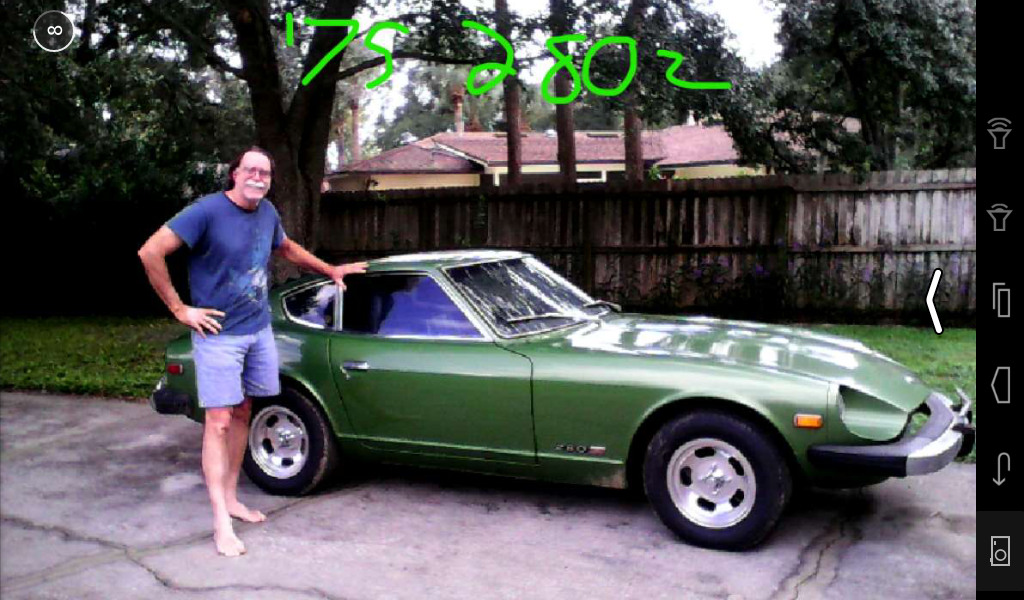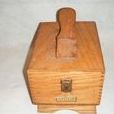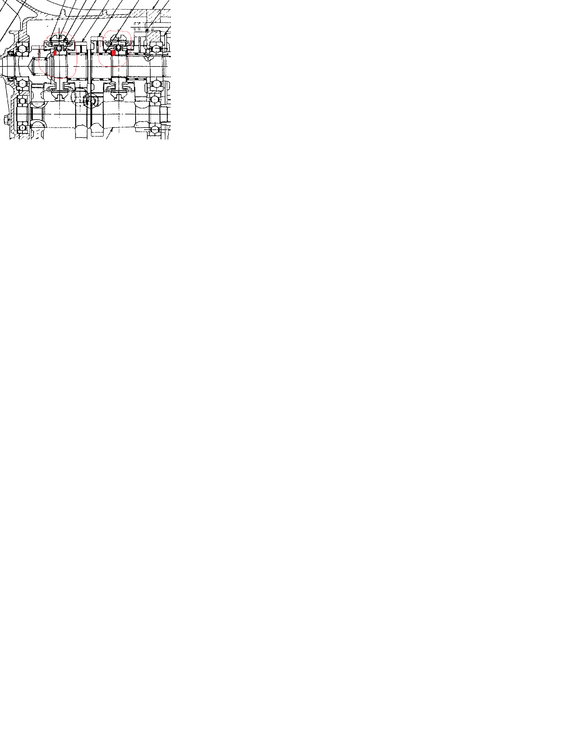
Everything posted by Dave WM
-
Do you need Ammeter /Fuel gauge to start car
the assumption is you have a ammeter with an internal shunt. Later models like my 75 used as external shunt, in which case no need for an ammeter connection to complete the circuit.
-
L28 front cover
you can remove the front cover without removing head. as mentioned drop the front of the pan about 1/8 inch. if you want to inspect the bottom of the tensioner then removing the front cover is best. Make sure you get a good seal around the water passages. permatex aviation sealant. also you want good clean surfaces when reinstalling. lasty use a thread sealant on the water pump long bolts.
-
New Oil Pump Installed, now hearing noise from engine?
I tip on oil pump, don't remove the spindle, just remove the dizzy so you can grab the top of the spindle with something (dont go beast mode on this, you dont want to damage just keep in from dropping). then unbolt and remove the pump. install by looking rotating the pump drive so it can line up with the spindle that is still in the engine.
-
Current draw traced to fusible link
did you completely disconnect the alt? that is both the large cable to the positive terminal as well as the two prong plug? as aready mentioned I wonder if you are mixing a internally regulated alt with a external VR, that would not be a good idea.
-
Transmission Noise in 3rd Gear - F4W71A
clutches and flywheels can get complicated. you have the 225 and 240 mm versions, the smaller IIRC had 6 bolt holes for the pressure plate, the larger (2+2 and ZX) has nine holes so you have to have a matching flywheel and pressure plate. Next up is the throw out bearing, there are 3 diff lengths IIRC, not sure which goes where but you want it right so the pressure plate fingers are depressed correctly when you disengage the clutch. I am not even sure the pressure plates are the same within the 225 and 240 sizes, that is some may be taller than others.
-
1977 280z AC -- issue # xx of yy
Its SO much nicer with a working A/C. I took mine out for my weekly trip to the park, 98f 70% humidity. If I did not have A/C the car would have never left the garage. With the OD 5 speed, A/C, and the new rad, I can cruize 70-75 at about 2.7k, windows up so I can hear the stereo, enjoy the ride. its a 35 mile trip on way to the park, the temp gauge never moved of the middle of the E in TEMP.
-
1977 280z AC -- issue # xx of yy
congrats! yes there should be a hole for the condensate hose.
-
Engine Timing Cover
yes. IIRC about 30$ shipping so about 100$ total. the casting was a bit rougher overall but it functionally I am sure it would be fine. I have video of it somewhere.
-
Engine Timing Cover
you can buy them new from japan. https://www.amayama.com/en/part/nissan/13501a8600
-
1977 280z "Fuel" warning light always on
ok this is a long shot.. IF the can the thermistor sits in gets plugged up by junk in the tank, I suppose its possible the small holes in the can could become blocked. this would prevent fuel from cooling the thermistor, allowing heat to build and resistance to drop. I would pull the sending unit, look it over real well for the small holes I mention, maybe even use a small exacto blade to open them up a tiny bit, and try it again. IIRC from some of the new units being made, the holes may be the issue, esp in a old tank. after clearing/opening up the holes test it before reinstalling. you want to see bubbles come out of the can when immersed into a fluid, then drain out again when removed. I presume the can and hole size is setup to act as a damper slow the on off process.
-
1977 280z "Fuel" warning light always on
ok so its brand new, two months old, works perfect, as in it would come on when tank was nearly empty. I mean I rarely see mine come on as I rarely get down that low on fuel. so approx how many times did it work? off and on at low fuel? describe the way it came on, suddenly or slowly when it was working.
-
1977 280z "Fuel" warning light always on
geez this keeps coming up. I would recommend you pull the unit out of the tank and bench test it with a 12v source and the light used in the car. could be you just have the wrong light, pulling too much current causing the thermistor to run away.
-
Waterless Engine Coolant?
I understand its very non compatible with water, so if you have any problems on the road, like a coolant leak, bad water pump, etc that need a field repair, it could make matters more complicated.
-
Transmission Noise in 3rd Gear - F4W71A
if its really that loud, you should try bench running it. a large drill and some rubber hose over the input shaft. I know its a long way off from actual loads and rpms, but its fun and who knows maybe something will turn up.
-
Transmission Noise in 3rd Gear - F4W71A
if you were not having issues with sycrhonization i would tend to let it be. there are measurements that you can take to see how much wear there is (gaps) to give you some idea about how much life you have. If you decide to replace them there is a guy on youtube that does nothing but transmissions. i cant recall him but a search should find easy. He goes into great detail about what to look for as far as the brass parts are concerned.
-
Transmission Noise in 3rd Gear - F4W71A
-
Transmission Noise in 3rd Gear - F4W71A
I found a pic of what I was trying to describe in my 75/76 FSM. Its fig MT-28 on page MT-8 they show two "synchronizer hubs" front is 3rd & 4th (move the sleeve one way to lock 3rd to the main shaft, move it the other to lock the input to the output no gears. there is also an illustration of the 1st & 2nd "synchronizer hub". If you look carefully at the see thru side view you will see how 3rd and 4th have an offset while 2nd & 3rd look to be symetrical.
-
Transmission Noise in 3rd Gear - F4W71A
iirc the forward most servo hub is directional, unlike the others. not sure but i think is possible to go in the wrong way. I dont know if this could cause the clunk issue, but i would recommend you look at it very closely and check the fsm. I think it mentions this.
-
Transmission Noise in 3rd Gear - F4W71A
double check the front cover. The shim will tend to stick to that on the counter shaft bearing recess. Its easy to not notice it, and if that happens its easy for it to eventually get lost as the cover picked up and moved around. The oil is pretty sticky but eventually it will fall out. I assume its there to maintain the proper mesh of the gears, if the gears get too far out of mesh they start rubbing into the hubs, it will make an awful sound, you can see this by just moving the shafts out of alignment. I don't know if the tiny bit of miss alignment cause by a missing shim (there are different thickness shims out there I assume for production tolerance compensation. You need to follow the FSM and use a micrometer to see if you need one and what the thickness should be.
-
Transmission Noise in 3rd Gear - F4W71A
the mesh is also maintained by the counter shaft shims in the front cover that act on the outer race of the front counter shaft bearing.
-
Lash Pad 240z
my guess is there is something wrong with the wipe pattern on the rockers? if the head was machined i may need shims under the cam towers. You should ask if it was machined, was it machined both top and bottom and how much was taken off. Was it machined to make flat (warped) if so its my understanding the top would need to be machined as well. I it was machined to just clean up the surface (not warped) then the top would not need machining would still have to be shimmed. The how to rebuld your L28 book covers all this.
-
TTT Outer Tie Rods or Moog?
I assume the tires are and rims are ok? I had a pretty bad shake, I ended up getting new tires and steel rims, after that all good (they looked fine, i have to assume they may have been deformed from a long period of non use by po. How did you determine the inner tie rods were bad? I assume some measure of end play? where the boots shot? I would think the orig would be good for well over 100k assuming they were protected from elements.
-
HELP Wanted! How do I remove this shift shaft/striking rod in 280Z 5 speed?
slow brute force is a good way to bend things. You want sharp small impacts. Double nut it so you have something solid to rattle on, back up the rod with metal (not wood), hit it with the impact hammer. I learned my lesson about using impact when I tried to remove the rear stub axle with a slide hammer. It was the 1st time I used the slide hammer with the puller designed for hubs. The fitting did not exactly match up hole wise, but I was able to loosely get it to fit with some wheel nuts. I tried whacking the hammer a bunch, nothing happened. I was looking at youtube some some mentioned getting the puller on tight. I just assumed even loosed the force would be transmitted eventually with the slide hammer. I went back and did a better job and got the fitting on tight to the hub. One half a$$ try and the hub popped out. Sharp impacts and dont let the force dissipate (like the rod would do if not backed up) is crucial.
-
HELP Wanted! How do I remove this shift shaft/striking rod in 280Z 5 speed?
there hole that is being used to access the pin is the hole for the reverse lockout mech. I doubt nissan was concerned about the pin removal. That being said, I think a rattle hammer and backing up the rod with something solid (metal) would release the pin quickly.
-
Flushing the evaporator
sounds good. I would do a pressure check with nitrogen, look for leaks with soapy water. I think this is a better test than just checking for holding a vacuum, the system after all operates under pressure not a vacuum. But I suppose the vacuum method must be fine as that is what you generally read up on. I would let the vacuum pump run for at least 1 hour to make sure you get as much of the air molecules and boil of any water as possible.








